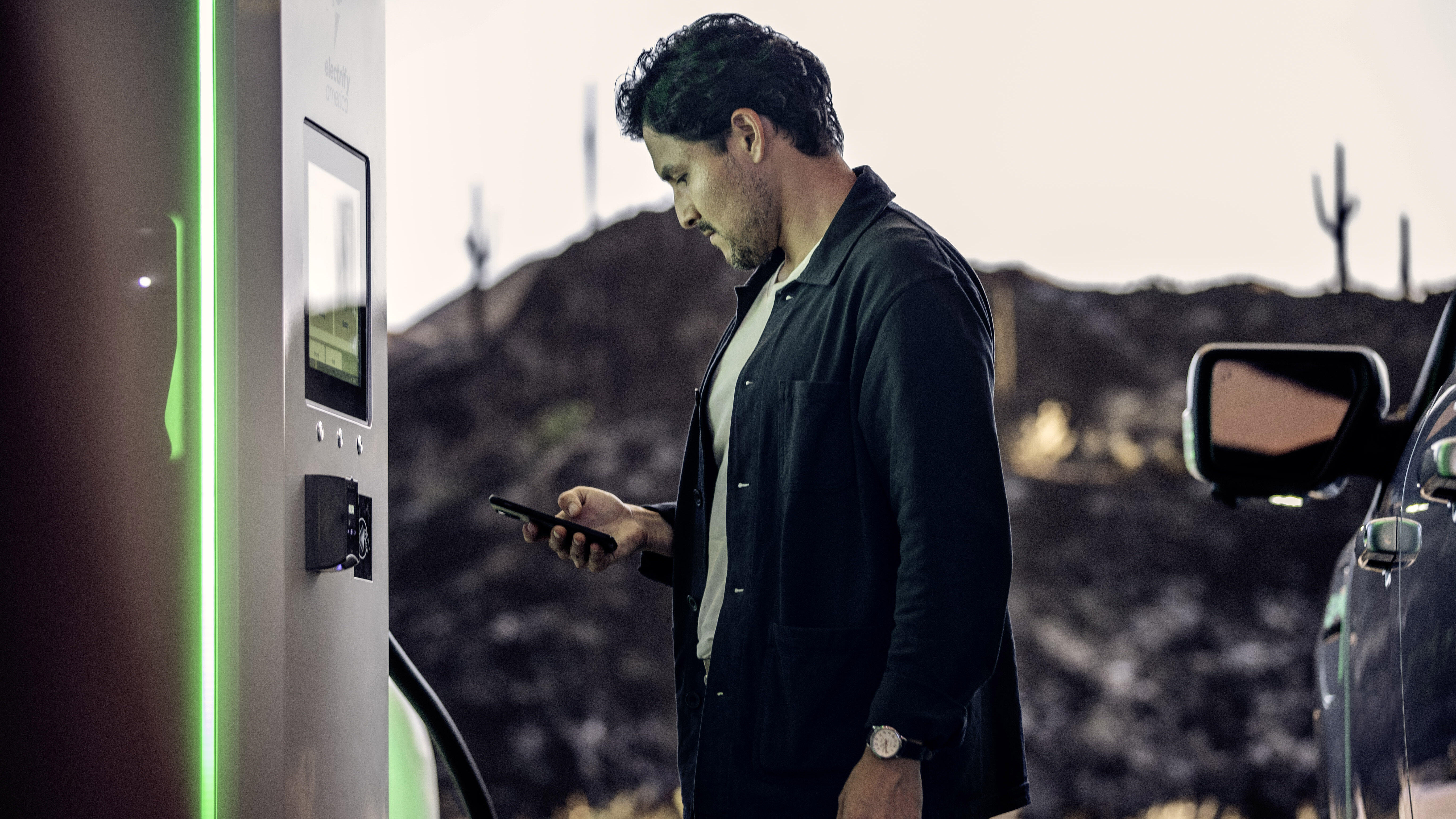There aren't any big changes, but current and future electric car owners still would get some nice benefits.

A Ford F-150 Lightning electric pickup truck charging at at public charger.
Image: Ford
The bipartisan infrastructure bill has been in flux since the day it was announced, with a lot of Biden administration EV proposals getting pushed aside or reduced in favor of spending with more widespread support. Still, there are a number of items in the bill of interest to current or prospective EV buyers. Here's a rundown.
In addition to $110 billion in funding for roads and bridges (which will help anyone with a car), there's $7.5 billion earmarked for EV charging station investment, especially around highways and rural or economically challenged areas—they're sometimes called "charging deserts," or places where it's totally infeasible to own an EV unless you have your own charger at home.
SEE: The CIO's guide to quantum computing (free PDF) (TechRepublic)
Currently, while there are plenty of Tesla Superchargers lining the nation's highways, it's a more mixed bag if you own an EV from a different carmaker. Electrify America has grand cross-country EV plans, as does the well-funded Rivian EV startup, but it's just a drop in the bucket if carmakers are to achieve their ambitious electrification goals.
The $7.5 billion investment — although it remains to be seen how the money actually gets spent — will help considerably.
$73 billion is being set aside to upgrade and modernize the nation's electrical grid, which is necessary for everything from wildfire mitigation to national security, as well as helping the grid sustain a massive increase in charging as EV sales continue to grow.
But, though President Biden called for massive increases in subsidies for electric vehicles, those were stripped out of the bipartisan infrastructure plan (though they could return in a separate funding bill whose passage is far from certain).
So, for now, even if the infrastructure bill passes, things will stay the same if you're a new EV buyer. Any buyer of an electric car made by any company aside from Tesla or General Motors—which have both exhausted their EV tax credits—will receive up to $7,500 back on their income tax return as a dollar-for-dollar nonrefundable tax credit. In other words, if your income tax burden was previously $10,000, it would now be $2,500.
However, if you owe less than $7,500 in income tax, you don't get the full credit. This is something that a lot of EV proponents would like to fix. Additionally, the current system requires buyers to pony up the full cost of the car upfront (or finance it), and changing it to a point-of-sale credit that reduces the outright cost of the car would help make EVs considerably more accessible.
SEE: General Motors and 7 EV charging networks are trying to solve the biggest challenge to electric car adoption (TechRepublic)
There are also subsidies for plug-in hybrid vehicles that include both a large battery and a more traditional internal combustion engine. The tax credit, which works similarly to the $7,500 EV credit above, scales depending on how large the battery is in the plug-in vehicle.
For example, the 2021 Volvo XC90 Recharge plug-in hybrid has a battery capacity of 11.6 kWh, which is good for a $5,419 tax credit. But the 2021 Toyota RAV4 Prime plug-in hybrid has a larger, 18.1 kWh battery and qualifies for the full $7,500 tax credit. Most carmakers have some kind of plug-in hybrid available or in development, and the IRS has a full list of cars that qualify for the federal EV tax credit on its website.
There's also a new bill, the Affordable EVs for Working Families Act, proposed by Senator Dianne Feinstein (D-Calif.) that would provide up to $2,500 for buyers of used electric cars (that are at least two years old and cost less than $25,000) to make those more affordable. There's no indication that the bill will ever pass, but it could get rolled into some other bill down the line.
It's also worth remembering that the bipartisan infrastructure plan needs to pass both the House and Senate, before getting signed by President Biden. Though there's theoretical agreement on these items and the overall price tag, there's still a long way to go to get across the finish line.

Best of the Week Newsletter
Our editors highlight the TechRepublic articles, downloads, and galleries that you cannot miss to stay current on the latest IT news, innovations, and tips. Fridays
Sign up todayAlso see
- DevOps: A cheat sheet (TechRepublic)
- C++ programming language: How it became the foundation for everything, and what's next (free PDF) (TechRepublic)
- Video game career snapshot: Industry insights and jobs for IT pros (TechRepublic Premium)
- Tom Merritt's Top 5 series (TechRepublic on Flipboard)







 English (US) ·
English (US) ·